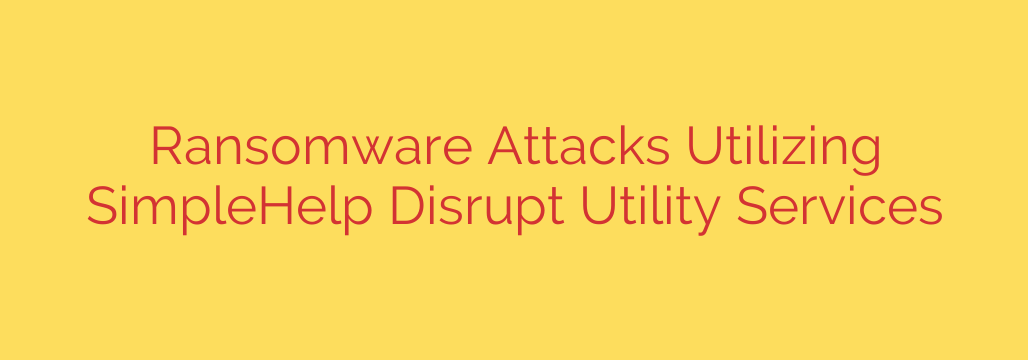
Recent reports highlight a concerning trend in the cyber threat landscape, specifically targeting critical infrastructure. Threat actors are actively exploiting vulnerabilities in legitimate software to launch disruptive ransomware attacks.
One particular vector gaining attention involves the use of the remote support application known as SimpleHelp. Malicious actors are leveraging instances of this tool that are improperly secured or exposed to the public internet without adequate protection. By compromising these accessible endpoints, attackers can gain a foothold within a target network.
Once inside, the objective is clear: deploy ransomware. This type of malicious software encrypts data and systems, effectively locking out legitimate users and bringing operations to a halt. The attackers then demand a ransom payment, typically in cryptocurrency, in exchange for the decryption key.
Worryingly, these attacks are disproportionately affecting essential services. Utility services, including those responsible for providing power, water, and other vital resources, are being targeted. The potential impact of successful cyberattacks on these sectors is significant, threatening not just financial loss but also service outages that can affect large populations and pose risks to public safety.
The exploitation of tools like SimpleHelp underscores the need for organizations, especially those managing critical infrastructure, to prioritize the security of their remote access tools. Implementing strong authentication measures, ensuring all software is patched and up-to-date, restricting network access, and actively monitoring for suspicious activity are crucial steps in defending against these evolving ransomware threats. Strengthening cybersecurity postures is essential to protect against disruptions and safeguard vital services.
Source: https://go.theregister.com/feed/www.theregister.com/2025/06/12/cisa_simplehelp_flaw_exploit_warning/








